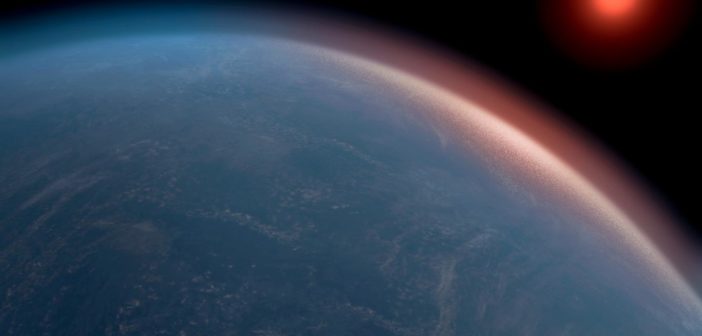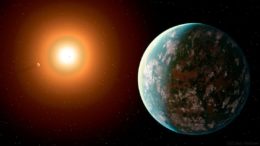Editor’s note: In these last two weeks of 2020, we’ll be looking at a few selections that we haven’t yet discussed on AAS Nova from among the most-downloaded papers published in AAS journals this year. The usual posting schedule will resume in January.
The Interior and Atmosphere of the Habitable-zone Exoplanet K2-18b
Published February 2020
Main takeaway:
A team of scientists led by Nikku Madhusudhan (University of Cambridge, UK) investigated the atmospheric and interior conditions of K2-18b, an exoplanet located ~124 light-years away that is roughly 2.6 Earth radii in size and 8.6 Earth masses in weight. They found that this planet could have the right conditions to support liquid water beneath its atmosphere on its surface.
Why it’s interesting:
Most studies of potentially habitable worlds have focused on Earth-like, rocky planets. K2-18b represents a different category: a super-Earth that’s between Earth and Neptune in its properties. Madhusudhan and collaborators’ analysis demonstrates that the potential for habitable conditions aren’t restricted to Earth-like planets — larger, less dense bodies might also present the right conditions to support life.What kind of world K2-18b might be:
Madhusudhan and collaborators use observations of K2-18b’s atmosphere and its bulk properties to constrain this planet’s structure. The resulting possible scenarios for K2-18b range from a rocky world surrounded by an enormous hydrogen and helium atmospheric envelope, to a water world with a very thin atmosphere. Future observations with observatories like the upcoming James Webb Space Telescope should help us to learn more about this potentially habitable world.
Citation
Nikku Madhusudhan et al 2020 ApJL 891 L7. doi:10.3847/2041-8213/ab7229



1 Comment
Pingback: বসবাসযোগ্য অঞ্চলের বহির্গ্রহ K2-18b এর অভ্যন্তরীণ পরিবেশএবং কাঠামো – চিত্রা – কালপুরুষ